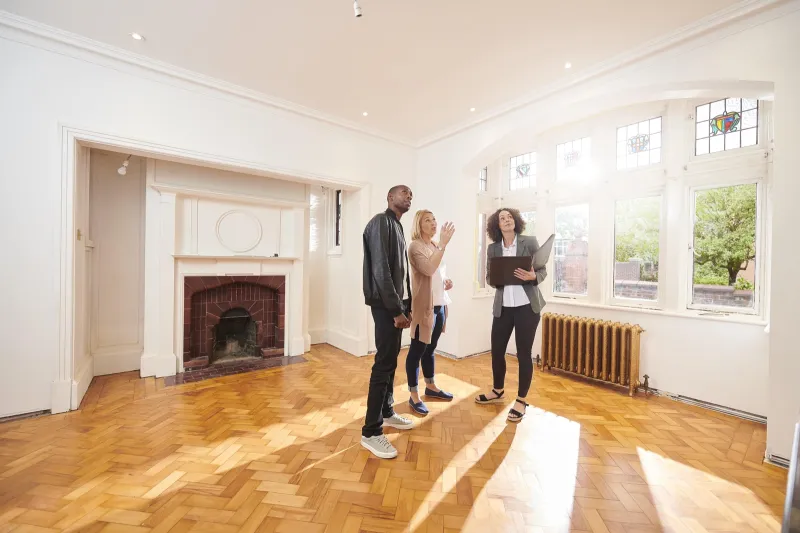The Complete Homebuying Guide

It doesn’t matter whether you’re a first-time homebuyer or you’re buying your third house – it can be a challenging process if you don’t have the right people to help you.
Our homebuying guide walks you through the most important parts of buying a home, reminding you of considerations that even the most experienced home buyer may forget about.
Prepare Your Finances
Don’t get surprised when you go to a lender to ask for a loan. By preparing ahead of time, you can ensure that your credit and finances are in a good spot and increase your chances of getting a loan.
Check your credit.
Lenders want to be confident you'll repay your home loan as agreed. They rely on credit history reports and credit scores to assess their risk of lending you money to purchase a home. Late or delinquent payments and high credit account balances can lower your credit score and result in a loan denial.
To make sure inaccurate data doesn’t result in that denial, review your Equifax, Experian, and TransUnion credit history reports before applying for a loan. If you find errors, follow the bureau's dispute policies to have them removed.
SAFE members can view their FICO® credit scores for free in Online Banking. Scores within the system are updated quarterly.
Know (and reduce) your debt load.
Too much debt can stand between you and homeownership. Mortgage lenders calculate your debt-to-income (DTI) ratio to determine if your income could support the additional weight of a home loan. Maximum DTI thresholds vary by the lender, but most prefer DTIs of 43% or less. If, for instance, you earn $4,000 each month before taxes and other deductions, your total debts should be under $1720 each month for an acceptable DTI.
If you do some quick math and realize that your DTI is over that 43% threshold, consider prioritizing paying off some big-ticket items before applying for your mortgage, or maybe even refinancing some of your debt so your monthly payment is lower. Of course, refinancing means extra credit checks, so this is a balancing act.
Trying to figure out your DTI?
- Find Your Debt
Add all your monthly debt payments together. This should include your existing rent or mortgage, student loan payments, car payments, average credit card payments, etc. - Find Your Income
Either take your yearly salary and divide by 12 or multiply your hourly wage by your average number of hours worked in a month. If you work 40 hours a week, that averages out to about 173 hours a month. Don’t forget to include any additional sources of income, like investment returns. - Find Your Ratio
Divide your debt by your income.
Get everything together.
When you eventually apply for a mortgage, you’ll need to bring paystubs, bank statements and bills so the lender can determine your DTI and what you can put down towards your down payment. While you’re figuring all of this out for yourself, you can save future-you time by pulling it together now.
Understand the Costs
It’s easy to forget that your payments won’t just be the cost of the house divided by 360 (or 120 if you go with a 10-year mortgage). In addition to the interest you’ll be paying, there are other fees that will show up in your mortgage payments and other items you’ll be responsible for that you aren’t as a renter. Understanding these costs will make sure you don’t end up house poor.
Estimate escrow.
The credit union will estimate how much things like property taxes and insurance will cost annually and have you pay into an escrow account so they can make those payments on your behalf. Because your property taxes and insurance amount will vary wildly based on what your home is worth and where you’re located, it’s nearly impossible to guess what your escrow will be without any details. That said, homeowners’ insurance in SC averages about $1,550 a year and property taxes average about $1,000 a year. That’s an extra $200 per month into escrow.
Understand Private Mortgage Insurance (PMI).
Another common additional fee is Private Mortgage Insurance (PMI). Very few people can make a 20% down payment, especially not on their first home, so lenders will often purchase PMI to help offset the additional risk they’re agreeing to by lending money to people who can’t make that down payment. Your PMI payment will go away once you’ve paid off 20% of the value of your home. Precisely how much this will cost depends on how much you’ve put down, your credit score, your loan type, etc., but it averages out to $100 to $300 per month for the average SC home.
Budget for maintenance.
If you’re a first-time homebuyer, also remember that you’re now responsible for paying for repairs, routine maintenance, etc. This won’t be factored into your mortgage, but experts recommend setting aside anywhere from 1% to 4% of your home’s value for repairs. Based on the average home price in South Carolina, that’s approximately $2,400 to $10,000 a year – an extra $200 to $800 per month.
Work Through Prequalification or Preapproval
Once you understand the costs involved with owning a home and you have a good sense of your own financial stability, you can start seriously investigating your loan options and figuring out precisely what’s involved.
Explore down payment options.
Putting more money down could lower borrowing costs, but that’s not feasible for everyone. Research down payment assistance programs in your state, city, and county to see if you qualify. If a down payment is out of reach, give SAFE a call to explore your options. Our first-time buyer programs could allow you to finance up to 100% of the sales price.
Look at loans.
Try to get a realistic understanding of the loans available to you. Talk to one of our loan officers about the mortgage products and loan options we have that will work best for you, and don’t forget about our rate calculators. These will help you get a really good sense of what you could actually be paying each month and can help you compare your savings over the life of a loan.
Figure out what you can afford.
Get prequalified or preapproved so that you will know what you can afford before you start shopping. This will prevent you from falling in love with a house that may not fit within your budget. On the flip side, make sure you’re comfortable with the amount the lender is offering. Because the mortgage approval process doesn't look at how you spend your disposable income, it is possible to qualify for a loan and then have trouble making the monthly payments.
Determine how much house you can afford by calculating how much money you'd have each month after all bills are paid, including the new mortgage. Don’t forget to include the repair budgets and escrow amounts you’ve estimated.
Ask every question.
There is no such thing as a dumb question! We are happy to answer any questions along your journey. Not sure what “points” are in your estimate? Ask. Not sure if there’s a penalty for prepayment? Ask. As a local lender, we’re here for you to help you understand the responsibility you’re taking on.
Start Shopping
It may feel off that actually shopping for a home is one of the last steps in the home-buying process, but this is the best way to ensure that you don’t fall in love with a home you simply can’t afford.
Compare the benefits of building versus buying an existing home.
With a pre-qualification letter in hand, you can more easily determine whether it makes good financial sense to build a new home or buy an existing one. While you can customize a new build, the cost of customizing can add up. On the other hand, you’re less likely to have to make significant repairs in the near future, meaning you could safely reduce some of the maintenance savings we recommended.




